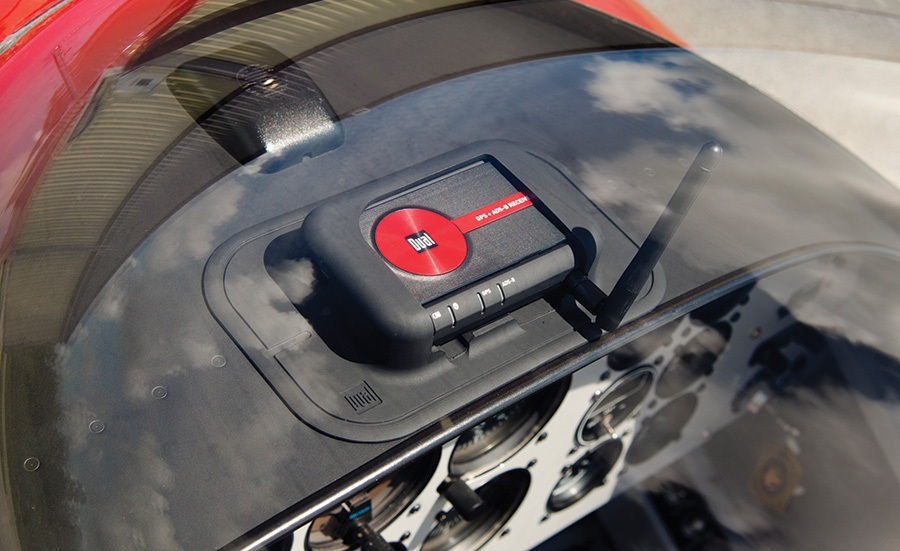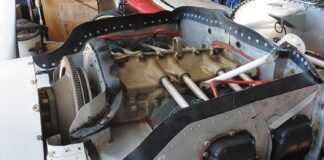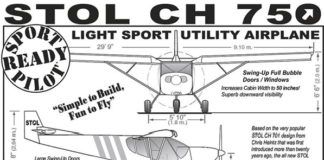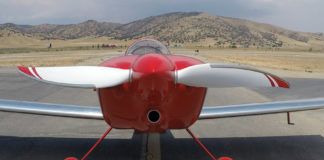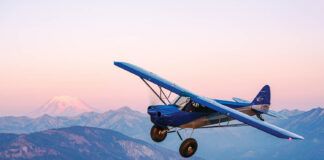I like technology. I like gadgets. I like useful technical gadgets. So once I got my GRT EFIS installed in my RV6, it was only logical that I began to wonder why one of the emerging, low cost ADS-B receivers could not provide it with weather and traffic, while doing the same for my iPad. The technical options were there. Surely some combination of USB, serial, Wi-Fi, or Bluetooth connection should work.
I also like interacting with people and trying to get the most done by all for the benefit of others. So this should be only a matter of getting the right players to collaborate.
Just Ask…And Ye Shall Receive
The quest to implement this useful feature began with an email to Greg Toman, GRT Avionics co-founder, in January 2012. Later, a second phone call to GRT mainstay Carlos Fernandez had me explaining that I wanted this badly enough that I would be willing to purchase an ADS-B receiver, supply it to them to make the initial adjustments, and then I would do the field testing, if they would simply move it up on the priority list. All it would take is a few minutes of time from their key software developer, so I said.
Eventually, GRT was convinced to move on this matter. Or they grew tired of my phone calls; either way they decided that implementing the feature was a lot easier than having to deal with my persistence. They even began a dialog with, and purchased from, Radenna a SkyRadar ADS-B receiver to test on their own. Phase 1 of a collaborative effort was underway.
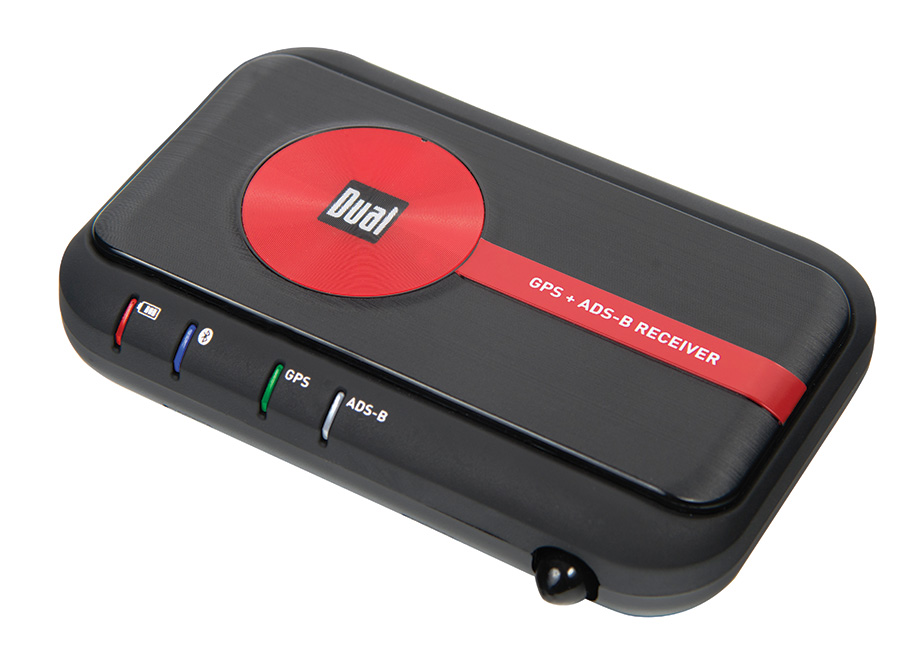
Dual Electronics’ XGPS170 GPS/ADS-B receiver includes a non-slip pad to keep the unit securely in place on the glareshield.
The Work Begins
Having had some experience in the design and building of computer systems, I was aware that this task would require the appropriate software drivers for the receivers to be connected to the EFIS. I decided to do a little homework and found a driver that was compatible with the main system software used by GRT. Looking back, I felt that sharing this information with the key system software developer at GRT, Jeff DeFouw, gained a bit of “street cred” for me. I suspect that it’s a bit rare for a customer to say, “I want this, and here are the parts to make it happen.” I further suspect that when someone does bring this sort of resource to the table, it saves a lot of time for the developer, who is already triply subscribed. On the other hand, Jeff most assuredly already had all of this sorted out. But it made me feel like I was helping.
Once we got started, it became a delight to work with Jeff. Within a day or two, he had code that was ready for testing. As can be ascertained from Jeff’s own description of the work, he knew what he was doing.
“The original SkyRadar S we had was easy. I don’t remember if we determined beforehand that it would be compatible, but once we had a unit in our hands, it only took a few attempts to see data. It had a very common USB serial chipset that was already compatible with drivers on the HX and SX. I just had to plug it in and then access the USB serial port. The only mystery was the baud rate. That took some trial and error, including trying higher baud rates than usual. From there it was a simple matter of connecting the USB serial port to our display software.
“For the L, we had to figure out why it wouldn’t connect. It turned out to have a very new version of the same chip, so the old drivers in the display units didn’t recognize it. I had to patch the drivers in the HX and SX to talk to it. After examining the data logs, we did find one issue with the radar coverage that required changes to the way we processed some of the data from the SkyRadar.
“Working with another customer, the 1090 units were still missing a lot of traffic compared with the displays on other devices. The 1090-ES traffic was coming in on a special message that’s not part of the original, public ADS-B serial interface standard. Those messages required a lot more work to decode. It was several more months before we finally had beta software to display the 1090-ES data.”
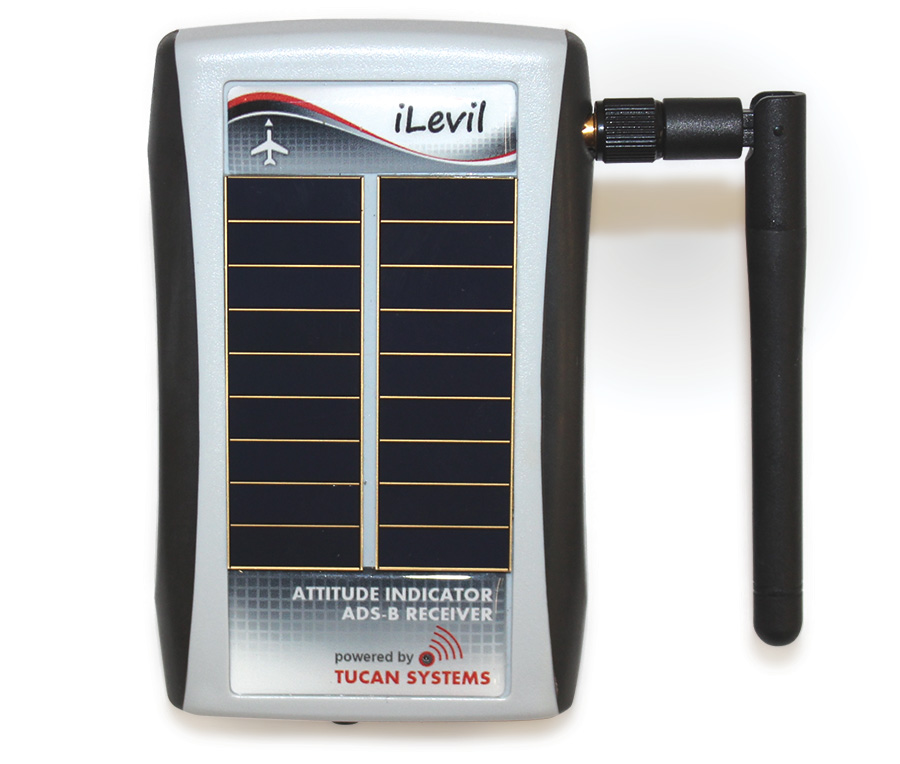
In addition to being USB rechargeable, small solar cells provide power to the iLevil SW’s internal battery.
Jeff got his part done and made me aware that code was ready for testing. Oops! I hadn’t purchased an ADS-B unit on my end yet. No problem. Dan Heath (KR2 builder at our airport) had a SkyRadar L and was willing to let me borrow it. So, borrow it I did; I plugged it into my GRT Sport, and “no joy.” It did not work. Hmmm…After a few calls, emails, and test code exchanges with Jeff, we discovered that the new SkyRadar L, which had just recently started shipping, had a different chipset for USB than the older model that GRT had. This turned out to be a blessing. If I had tested with the same ADS-B receiver as what GRT had, the code would not have worked for customers with newer units.
Of course I still needed to get a unit of my own. Luckily, one became available on the major web site dedicated to the construction of Van’s Aircraft’s RV series of aircraft, www.vansairforce.net, and I decided to purchase it. It arrived, I plugged it in, and…it worked! This was about mid-year 2012.
New, Additional Options for Collaboration
During the summer of 2012, more advertisements for cost-effective and portable ADS-B receivers began to show up. Again, timing worked to my advantage as about a month or so later, I was at AirVenture 2012 walking the aisles and saw that Dual Electronics, maker of the little black and red GPS pucks for iPads, had an ADS-B receiver and it had a USB port. I stopped and asked Greg and Joanna Lukins if their unit sent out the ADS-B data via the USB port. Greg said, “No, but why might you want that?” I launched into my speech about how nice it would be to have a portable unit that supplied my EFIS as well as my tablet. He committed to call engineering and see what was possible. The next day, as I walked by, he stopped me and (to my surprise) said, “Hey, our engineers say that it can be done. We will look into doing it later.” I was impressed. The collaborative effort was about to enter Phase 2.
A couple more vendors of ADS-B receivers were approached with this crazy idea, but in those cases, I was not met with as much enthusiasm. Oh, well.
Time marched on into late 2012. I somewhat assumed that the priority for doing this had fallen too low, when I got a call from Dual saying that the firmware change to the Dual unit was done! Greg would get a unit to me soon so that it could be tested. Woo-hoo!
By this time, Katie Bosman had joined GRT as marketing director. Those who know Katie will know that she is the type that grabs the bull by the horns and makes it happen. I felt a change from my pushing to make it happen to my being pulled to “git ‘er done!” in a very fine and friendly way.

Leaving Sun ‘n Fun 2014 and headed north, all traffic was routed through a narrow break in the weather. With ADS-B capability linked to the GRT EFIS, it was extremely helpful to be able to see weather, traffic, flight instruments, and engine data simultaneously on the same screen. Collaboration mission accomplished.
And Yet Another Opportunity
January 2013 found me in Sebring, Florida, at the U.S. Sport Aviation Expo, flying with Team AeroDynamix. As I walked through the vendor area during a break, I saw a nice setup by Levil Technology displaying their iLevil series of ADS-B receivers. I approached them to see if they supplied the ADS-B data over USB. I then got a detailed presentation of the product from Ananda Leon (software engineer and daughter of the company founder) and she said yes, not only do they supply data via USB, but they supply it via a serial port as well! And her current project was working on receiving data from the GRT engine monitor for display on an iPad.
Ananda went on to say, “The iLevil unit can be connected via the serial port and USB port, opening the doors to GRT systems that don’t have the USB connection option. Furthermore, the GRT EFIS owner can have a redundant system by connecting their EIS (engine monitor module) to the iLevil unit for display on an iPad, as we connect the iLevil unit to their GRT EFIS.”
Hmmm. Typical discussions followed about the work with other ADS-B receiver manufacturers and that the iLevil ADS-B receiver would be a nice thing to get checked out and tested. They agreed to collaborate on this wild idea as well, and promised to send a unit. I was most pleased that now Phase 3 of this collaboration was underway.
Dual, We Have A Problem
Soon after the discussion with iLevel, the Dual unit arrived. I plugged it in. Crash! Oops.
A quick call to Jeff at GRT and some fancy sniffer code later, problem solved. Yet another different chip, this time inside the Dual unit. Good thing Jeff had this process down. Also, having three GRT EFIS screens allowed me to dedicate one to being a “test bed” without affecting the flying status of my plane. So, again within a day or two, Jeff had the answer and all was working. Well, at least I thought it was.
And Another Problem…No Traffic!!
Since I had the SkyRadar unit connected to one display and the Dual to another, I could immediately see if the units were providing the same info. So, it was a bit of a surprise when I went out, saw weather on both, but traffic only on the unit supplied by the SkyRadar. I checked and checked, but could not find a reason. I called Dual and they looked into the matter as well. There had been some question about ADS-R (re-broadcast of ADS-B info), so maybe that was the issue. I asked my friend Ken Harrill to go up and fly alongside me to test whether everything was working correctly in our area. He has a NavWorx unit installed and runs WingX on his iPad, just as I do. We discovered that I received traffic on the Dual unit when he flew next to me, but not when he wasn’t there. A bit of head scratching and a documentation review led me to discover that I had programmed my Trig TT-22 transponder to broadcast that I was capable of receiving ADS-B on 1090 Mhz. The SkyRadar, my first ADS-B unit, receives information on both 1090 and 978 MHz. The Dual and several other portables receive only on 978 Mhz. No big deal, but you must let the ADS-B ground system know that. Otherwise you only get the traffic data via 1090 Mhz and the Dual (and others) never see it. Ken had triggered the 978 MHz ADS-B broadcast from the ground station with his NavWorx UAT transceiver when we flew together, which is why I saw the traffic alerts when he flew next to me. A quick change in my Trig TT-22 transponder setup and all was well. Whew!
I could finally go out and test the unit alongside another and compare the results. Same weather. Same traffic. Both units. I was a happy camper. I could capture images for Joanna and she, along with Katie, started cranking out their respective press releases and communicating the news to other GRT users.
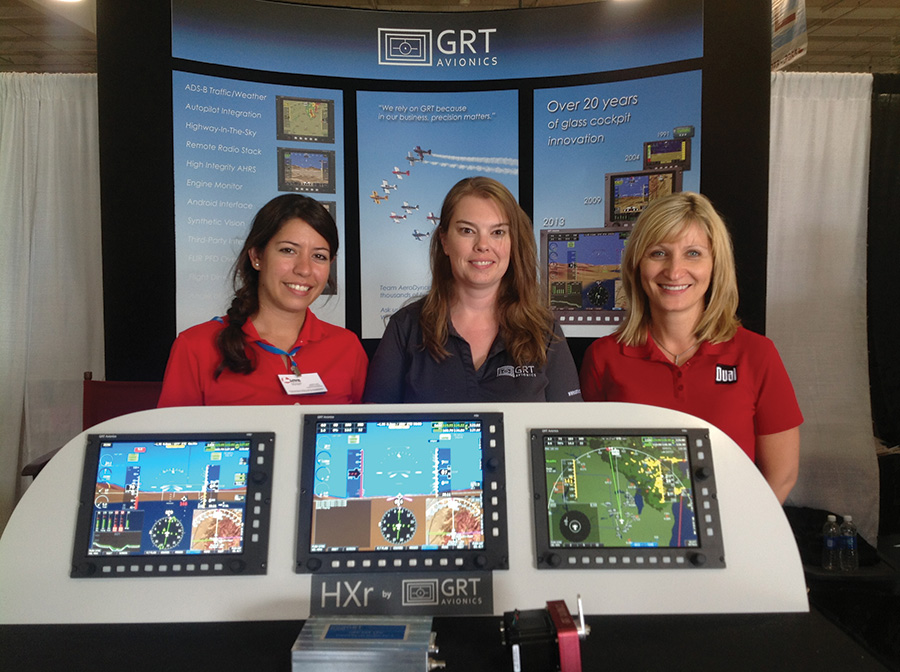
Left to right: Ananda Leon of Levil Technology, Katie Bosman of GRT Avionics, and Joanna Lukins of Dual Electronics.
Third Try At Collaboration Is The Charm
A month or two before AirVenture 2013, the iLevil unit arrived from Ananda. I plugged it in and…it worked! It seemed that solving the software matter with the Dual earlier made the GRT compatible with the iLevil and others as well. I captured more screenshot images and got Katie and Ananda together for marketing of this new capability.
It All Came Together At AirVenture 2013
As fate would have it, at AirVenture 2013, the iLevil booth was adjacent to the GRT booth, and the Dual booth was right across the aisle and two booths down. Seeing Ananda, Katie, and Joanna interacting together, one might have thought that they all worked for the same company. I guess in their minds they did in fact all work for the same customers—as if it was just meant to be!
And when asked about his part in this effort at collaboration, Jeff responded, “I like integrating devices, and I’m happy to see them working together. I’ve already worked with serial ADS-B receivers before, though. This was not going to be new territory. This was about expanding the options for providing data to the EFIS. I just needed to get the connections working, and the existing software would process the data. Given the common USB interfaces involved, it was just a matter of time to get the 978 MHz data streaming into the display. In cases like this, where I have limited access to real data from a real environment, I’m reliant on customers to do testing and collect data for me. Thankfully, we had customers and manufacturers willing to help with the cause.”
All of this work, from all parties involved, was on a volunteer and trust basis. No exchange of funds. No contracts. Just trust built upon extensive dialog and the belief that all parties want to “do the right thing” to make a better offering for us all.
An EFIS vendor was willing to dedicate a bit of time from a key resource to work on a project being pushed by a customer. Suppliers of ADS-B receivers were willing to spend the time and make product available to make it all work. As a result, there are now several choices available that might not have been otherwise. Judging by the number of potential customers that each vendor seemed to be referring back and forth, it appears that it was a worthwhile effort.
Collaboration or coopetition. In either case, we all win.
James Clark, a retired high tech executive and entrepreneur, is a commercial, instrument, and airshow pilot who currently assists individuals and corporations with technology in Experimental aircraft. He serves on several boards, include the Board of Directors of the Experimental Aircraft Association.
Photos: James E. Clark

